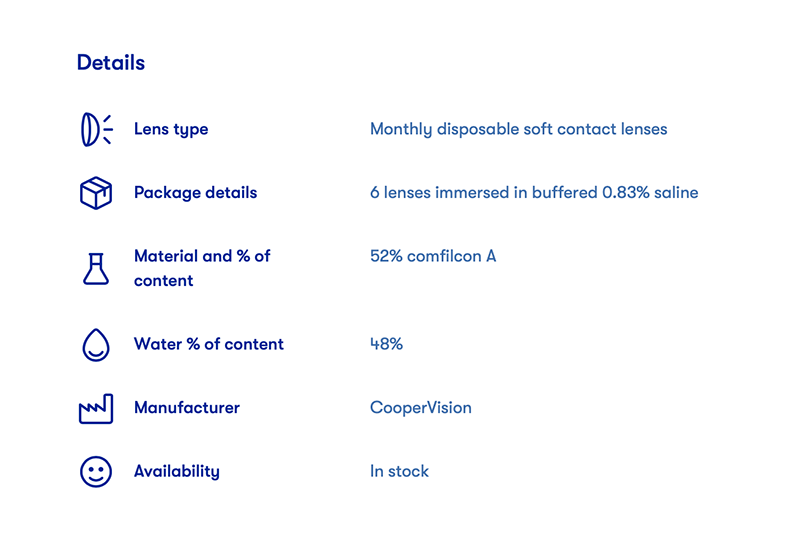Does your brand of contacts really matter?
If you’re a frequent contact lens wearer, then you’re probably familiar with your brand of contacts. Usually, all the information you know about contacts comes from your doctor or a friendly agent when you’re ordering. Beyond your own brand though, most people don’t know much about contacts. There are so many different types and brands of contacts, you’d be shocked!
While your eye doctor is well versed in the types of contacts available, it doesn’t hurt to have the knowledge yourself. It gives you the power to discuss different options at your next exam if you’re ever unsatisfied with your current brand.
So, let’s get into it. Does your brand really matter?
The big four
To understand the difference between contacts it’s important to first identify the major variables all contacts can have.
- Wear time: This is how long you can wear a single pair of contacts. Some contacts, called dailies, are made to be worn once then thrown away. Then you have extended wear contacts which fall mainly into two groups: bi-weekly and monthly.
- Optical corrections: Contacts need to correct your vision to 20/20. That’s ultimately the goal of all prescription lenses, regardless of wear time. Most contact lens prescriptions will fall into three categories: spherical, toric, and multifocal. Spherical lenses just have one power, which means your contact is only correcting nearsightedness or farsightedness. Toric prescriptions fix everything a spherical lens does with the addition of one more power to correct astigmatism. Lastly, multifocal lenses have the spherical power, as well as an additional power in each eye to address presbyopia. There is also a bonus category of multifocal astigmatism contacts which, you guessed it, corrects astigmatism and presbyopia.
- Conventional contacts: Up until this point, everything we’ve covered is about soft contacts. You know those soft, squishy things you put in every morning. Hard contacts are a completely different ball game in terms of prescriptions. They are much less common today than they were a decade ago, but some prescriptions still require a hard lens due to manufacturing constraints with soft contacts.
- Cosmetic and colored contacts: This final category is unique because sometimes they aren’t aiming to correct your vision at all. Colored contacts still require a prescription in the US as they are classified as a medical device and some brands do offer spherical and toric corrections. Once you’ve been fitted for these lenses, they can also be ordered as plano (no prescription) lenses.
With that context under our belts, let’s talk about specific brands.
1 brand, 2 brand, red brand, blue brand
As the largest contact lens retailer in the United States, we know a thing or two about different brands of contacts. If you have dry eyes and need a lens with extra moisture, Precision 1 might be a good thing to ask your doctor about. Same problem but you also have astigmatism? No worries, Precision 1 also come in a toric option.
Some people want a lens that they don’t have to switch out every day. We’ve got that too, with the ever-popular Acuvue Oasys for the bi-weekly lens and a great monthly option in the Biofinity. Yes, both of those come in a toric version, as well as multifocal.
That’s just the tip of the iceberg. What it ultimately comes down to is understanding how each of these brands are different. Much of that is due to the materials they are made with. If you look at a box of contacts it might say something like, “52% Comfilcon A” on the top. While that may sound like nonsense it’s actually great information about your contacts. 52% Comfilcon A would be Biofinity and it’s indicating that 52% of the material in that lens is Comfilcon A, which is a type of silicone hydrogel. More than half of all soft contacts today are made with silicone hydrogel.

If you can’t find that information on your box, just look up the brand on our website. If we carry it (we probably do), then we have a stat sheet for each brand of contacts that tells you: what it’s made of, what’s in the box, what moisture content it has, and the wear time.
Knowledge is power and knowing more about those clear pieces of plastic you put in your eye every morning will help you better advocate for yourself at your next exam.





